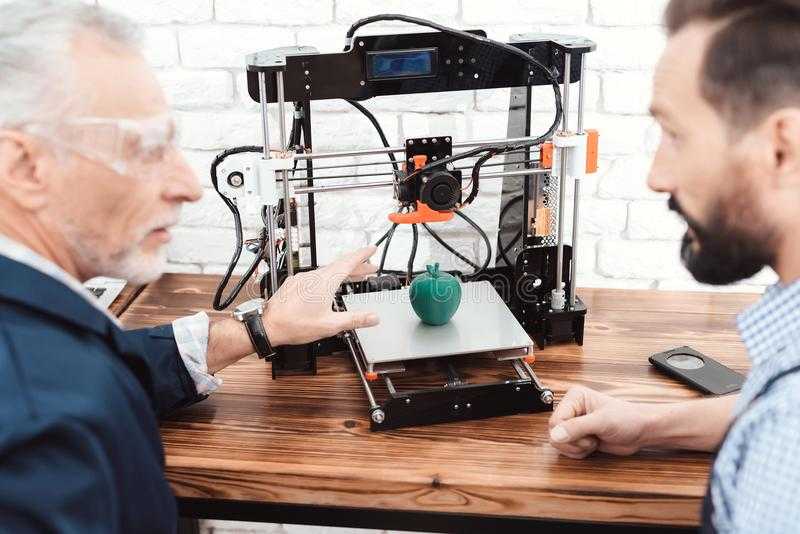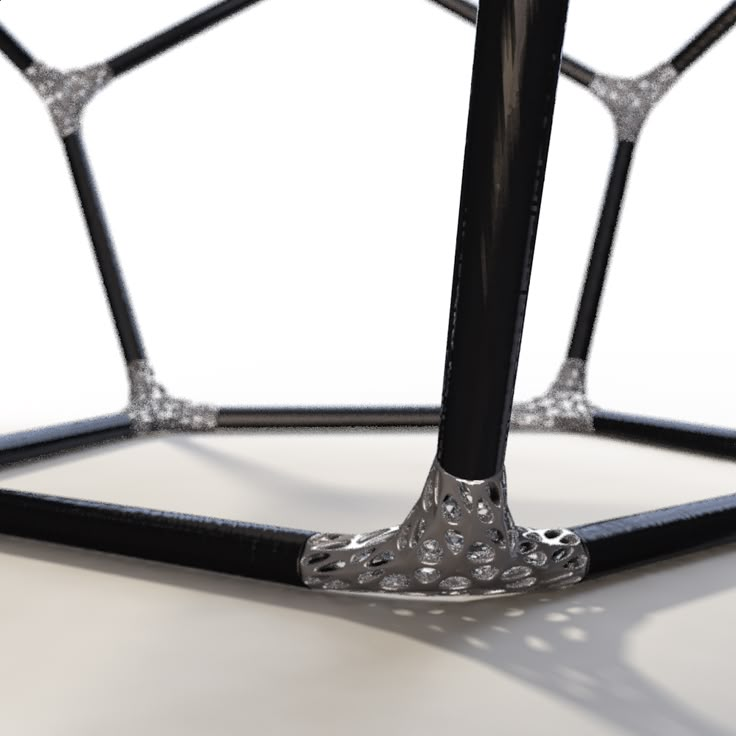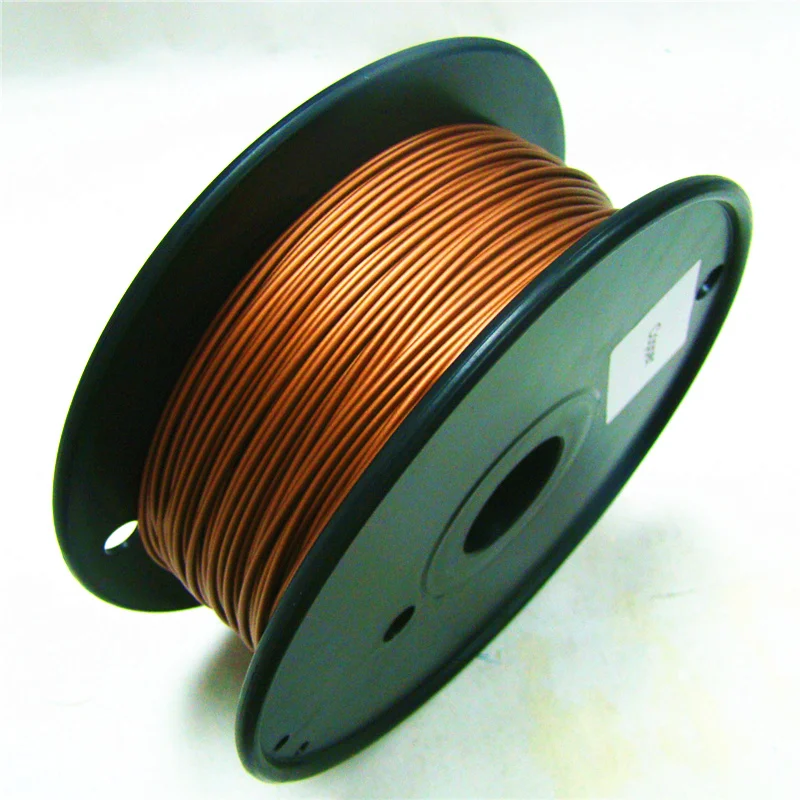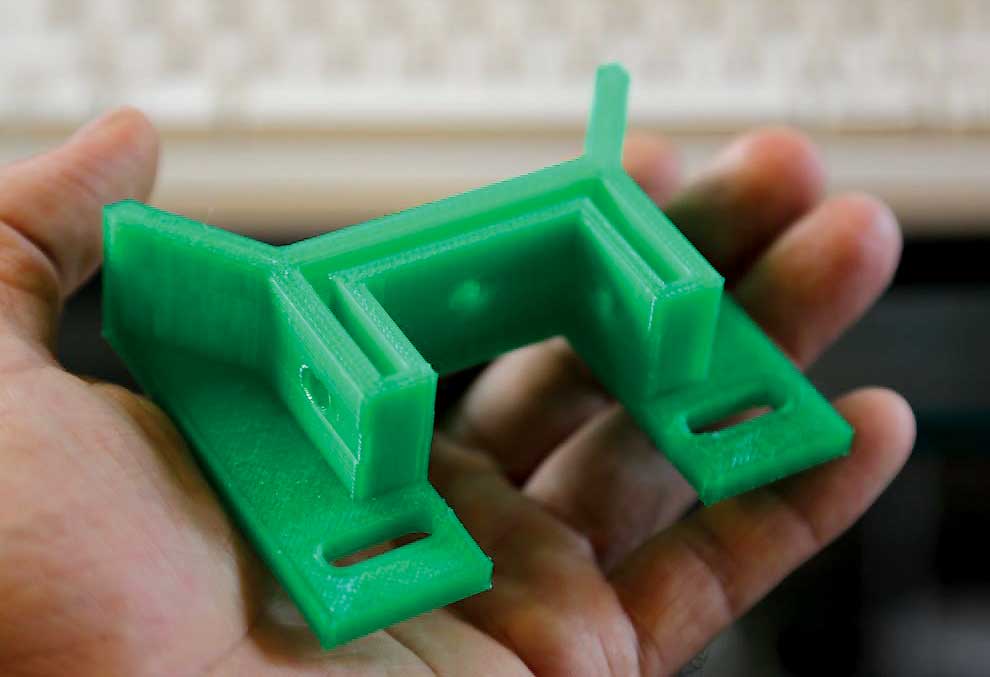Price of 3d metal printers
Best metal 3D printers in 2022: comprehensive overview
What is the best metal 3D printer in 2022?
Over the past few years, there has been a surge in both supply and demand for metal 3D printers.
Manufacturers are launching metal additive manufacturing machines that are faster, easier to use, and more powerful with an increasing number of compatible metals.
Many businesses are adopting these 3D metal printing technologies to produce cost-effective metal parts and prototypes, benefiting as well from increased freedom of design linked to additive manufacturing. They are suitable for a variety of industries such as aerospace, automotive, health, engineering, and more.
Although metal 3D printer prices have been slowly and slightly decreasing, these machines are still relatively expensive acquisitions, mostly ranging from $80K to almost $1M.
With our metal 3D printer selection, we aim to provide a comprehensive overview of what’s available from well-established and distributed brands, at various price points, and with different metal 3D printing technologies.
The best metal 3D printers in 2022
| Brand | Product | Build size | Country | Price Approximate starting prices based on supplier-provided information and public data. Prices may vary by region, over time and do not include additional products or services (taxes, shipping, accessories, training, installation, …). | |
|---|---|---|---|---|---|
| Markforged | Metal X (Gen 2) | 300 × 220 × 180 mm11.81 × 8.66 × 7.09 in | United States | $ 99,500125 000 €89,844 £14,472,673 ¥ | Quote |
| Desktop Metal | Studio 2 | 300 × 200 × 200 mm11.81 × 7.87 × 7.87 in | – | $ 110,000110 000 €99,325 £15,999,940 ¥ | Quote |
| Xact Metal | XM200C | 127 × 127 × 127 mm5 × 5 × 5 in | United States | $ 110,000100 000 €99,325 £15,999,940 ¥ | Quote |
| Pollen AM | Pam Series MC | ⌀ 300 x 300 mm | – | $ 140,000135 000 €126,413 £20,363,560 ¥ | Quote |
| TRUMPF | TruPrint 1000 | 100 × 100 × 100 mm3.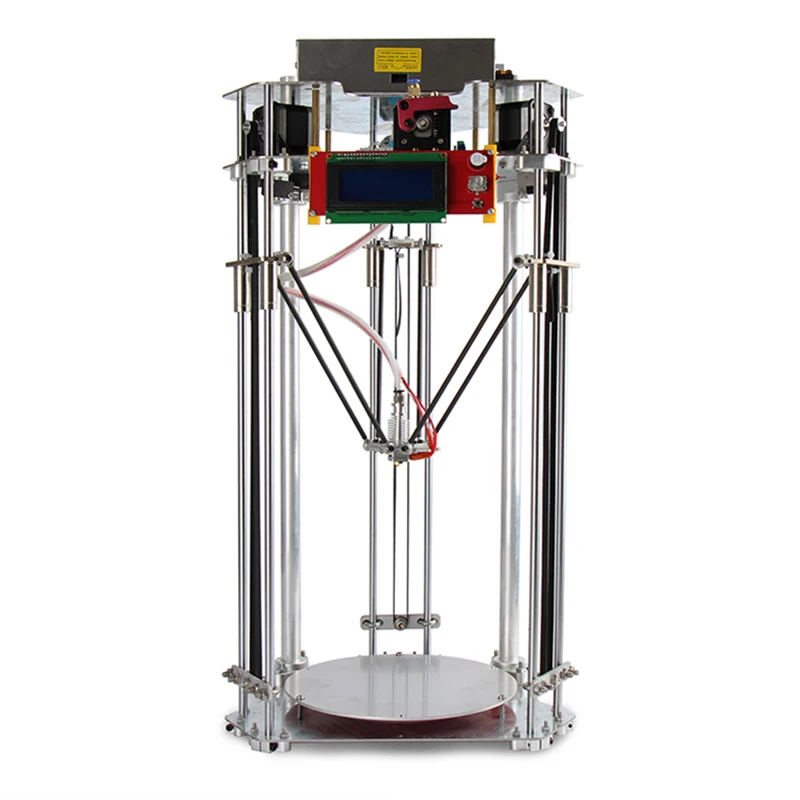 94 × 3.94 × 3.94 in 94 × 3.94 × 3.94 in | – | $ 170,000170 000 €153,502 £24,727,180 ¥ | Quote |
| 3D Systems This brand is a certified partner from our network. | DMP Flex 100 | 100 × 100 × 80 mm3.94 × 3.94 × 3.15 in | – | $ 245,000245 000 €221,223 £35,636,230 ¥ | Quote |
| EOS | EOS M 100 | 100 × 100 × 95 mm3.94 × 3.94 × 3.74 in | Germany | $ 350,000350 000 €316,033 £50,908,900 ¥ | Quote |
| XJet | Carmel 700M | 501 × 140 × 200 mm19.72 × 5.51 × 7.87 in | – | $ 599,000599 000 €540,868 £87,126,946 ¥ | Quote |
| Desktop Metal | Production System P-1 | 200 × 100 × 40 mm7.87 × 3.94 × 1.57 in | United States | upon request | Quote |
| Digital Metal | DM P2500 | 203 × 180 × 69 mm7.99 × 7.09 × 2.72 in | – | upon request | Quote |
| Formalloy | L-Series | 1000 × 1000 × 1000 mm39.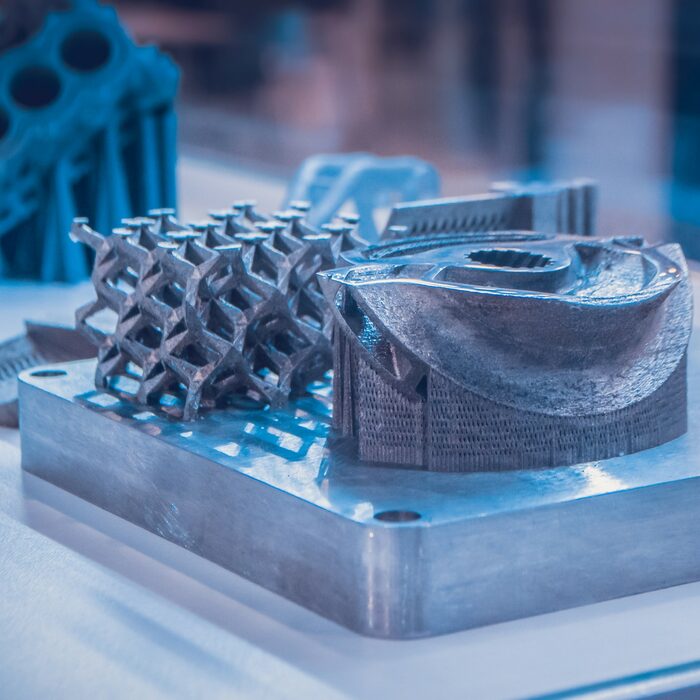 37 × 39.37 × 39.37 in 37 × 39.37 × 39.37 in | United States | upon request | Quote |
| GE Additive | Arcam EBM Spectra L | 350 × 350 × 430 mm13.78 × 13.78 × 16.93 in | United States | upon request | Quote |
| GE Additive | M2 Series 5 | 250 × 250 × 350 mm9.84 × 9.84 × 13.78 in | – | upon request | Quote |
| Renishaw | RenAM 500E | 245 × 245 × 335 mm9.65 × 9.65 × 13.19 in | – | upon request | Quote |
| SLM Solutions | SLM 125 | 125 × 125 × 75 mm4.92 × 4.92 × 2.95 in | Germany | upon request | Quote |
| SPEE3D | LIGHTSPEE3D | 300 × 300 × 300 mm11.81 × 11.81 × 11.81 in | – | upon request | Quote |
| TRIDITIVE | AMCELL | ⌀ 300 x 350 mm | Spain | upon request | Quote |
| Velo3D | Sapphire | ⌀ 315 x 1000 mm | – | upon request | Quote |
Expand to see more specs
Technology: The technologies listed above are main categories of metal 3D printing technologies.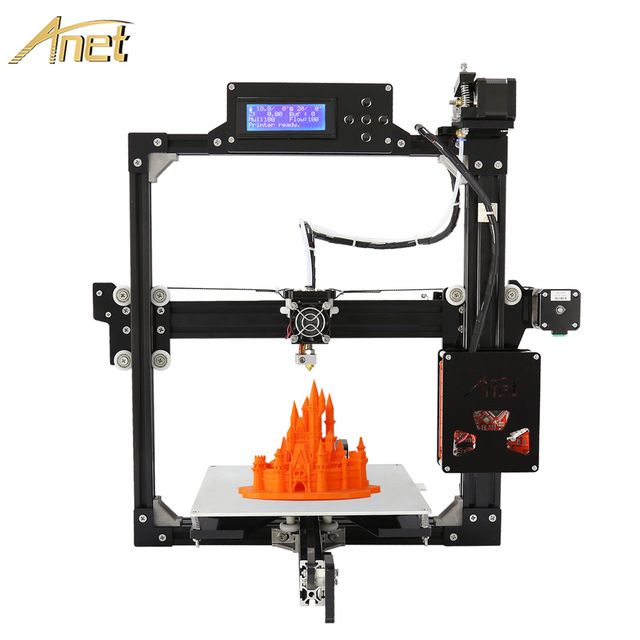 Most manufacturers have their own branded technologies, which fall into the main categories that are listed in the table.
Most manufacturers have their own branded technologies, which fall into the main categories that are listed in the table.
The products in the table are ranked by price (low to high).
| Brand | Product | Technology | Build size | Country | Price Approximate starting prices based on supplier-provided information and public data. Prices may vary by region, over time and do not include additional products or services (taxes, shipping, accessories, training, installation, …). | |
|---|---|---|---|---|---|---|
| Markforged | Metal X (Gen 2) | Extrusion | 300 × 220 × 180 mm11.81 × 8.66 × 7.09 in | United States | $ 99,500125 000 €89,844 £14,472,673 ¥ | Get a quote |
| Desktop Metal | Studio 2 | Extrusion | 300 × 200 × 200 mm11.81 × 7.87 × 7.87 in | – | $ 110,000110 000 €99,325 £15,999,940 ¥ | Get a quote |
| Xact Metal | XM200C | SLM/DMLS | 127 × 127 × 127 mm5 × 5 × 5 in | United States | $ 110,000100 000 €99,325 £15,999,940 ¥ | Get a quote |
| Pollen AM | Pam Series MC | Extrusion | ⌀ 300 x 300 mm | – | $ 140,000135 000 €126,413 £20,363,560 ¥ | Get a quote |
| TRUMPF | TruPrint 1000 | SLM/DMLS | 100 × 100 × 100 mm3. 94 × 3.94 × 3.94 in 94 × 3.94 × 3.94 in | – | $ 170,000170 000 €153,502 £24,727,180 ¥ | Get a quote |
| 3D Systems This brand is a certified partner from our network. | DMP Flex 100 | SLM/DMLS | 100 × 100 × 80 mm3.94 × 3.94 × 3.15 in | – | $ 245,000245 000 €221,223 £35,636,230 ¥ | Get a quote |
| EOS | EOS M 100 | SLM/DMLS | 100 × 100 × 95 mm3.94 × 3.94 × 3.74 in | Germany | $ 350,000350 000 €316,033 £50,908,900 ¥ | Get a quote |
| XJet | Carmel 700M | Material Jetting | 501 × 140 × 200 mm19.72 × 5.51 × 7.87 in | – | $ 599,000599 000 €540,868 £87,126,946 ¥ | Get a quote |
| Desktop Metal | Production System P-1 | Binder Jetting | 200 × 100 × 40 mm7.87 × 3.94 × 1.57 in | United States | upon request | Get a quote |
| Digital Metal | DM P2500 | Material Jetting | 203 × 180 × 69 mm7.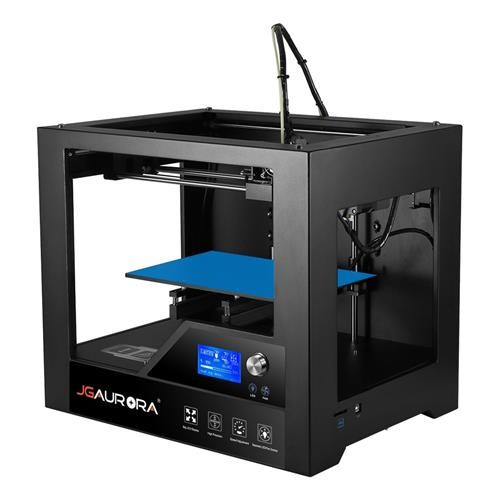 99 × 7.09 × 2.72 in 99 × 7.09 × 2.72 in | – | upon request | Get a quote |
| Formalloy | L-Series | Directed Energy Deposition | 1000 × 1000 × 1000 mm39.37 × 39.37 × 39.37 in | United States | upon request | Get a quote |
| GE Additive | Arcam EBM Spectra L | EBM | 350 × 350 × 430 mm13.78 × 13.78 × 16.93 in | United States | upon request | Get a quote |
| GE Additive | M2 Series 5 | SLM/DMLS | 250 × 250 × 350 mm9.84 × 9.84 × 13.78 in | – | upon request | Get a quote |
| Renishaw | RenAM 500E | SLM/DMLS | 245 × 245 × 335 mm9.65 × 9.65 × 13.19 in | – | upon request | Get a quote |
| SLM Solutions | SLM 125 | SLM/DMLS | 125 × 125 × 75 mm4.92 × 4.92 × 2.95 in | Germany | upon request | Get a quote |
| SPEE3D | LIGHTSPEE3D | Material Jetting | 300 × 300 × 300 mm11. 81 × 11.81 × 11.81 in 81 × 11.81 × 11.81 in | – | upon request | Get a quote |
| TRIDITIVE | AMCELL | Extrusion | ⌀ 300 x 350 mm | Spain | upon request | Get a quote |
| Velo3D | Sapphire | SLM/DMLS | ⌀ 315 x 1000 mm | – | upon request | Get a quote |
Main types of metal 3D printing technologies
The four main types of 3D metal printing technologies are:
- Metal Powder Bed Fusion 3D printing (SLS, SLM, DMP)
- Directed Energy Deposition (DED)
- Metal filament extrusion (FFF, FDM)
- Material Jetting and Binder Jetting
There are also some resin-based metal 3D printers, and metal sheet lamination 3D printers, but they are harder to come by.
It is not uncommon to see different acronyms and names for similar technologies. Each brand markets their own, proprietary methods. Some metal 3D printer companies even use a mix of different technologies.
Some metal 3D printer companies even use a mix of different technologies.
Here we provide a deeper look into each 3D metal printer from our list. They are grouped together according to their main 3D printing technology type (powder bed fusion, material/binder jetting, extrusion, and DED).
Extrusion-based metal 3D printer selection (FFF, FDM)
Extrusion consists of heating the material (filament) and pushing it through a nozzle. In the metal 3D printing case, the filament is generally made up of metal particles mixed into a binding agent.
After the part is 3D printed, the result is a raw object or part; it must go through several post-processing steps– such as debinding and sintering– to attain its final form.
Most extrusion-based metal 3D printing processes include these steps. The above illustration is sourced from Desktop Metal (Bound Metal Deposition™ process).
Desktop Metal’s Studio is an office-friendly, end-to-end metal 3D printing system. Aside from the printer, the Studio line also includes a debinding machine and a furnace for sintering. Indeed, parts 3D printed with this Desktop Metal 3D printer are “green”.
The Studio printer, with its proprietary Bound Metal Deposition technology, uses filament that is filled with small, metal rods. During debinding, the binding material (wax and polymer binders) is dissolved thanks to a proprietary liquid substance. The part is left porous, and must go in the furnace for its particles to fuse and densify the part.
Contact manufacturer Get a quote Add to comparison
MarkForged is specialized in continuous fiber 3D printing, but also offers metal 3D printing with their Metal X system, featuring Atomic Diffusion Additive Manufacturing (ADAM) technology.
This MarkForged 3D printer extrudes metal-filled plastic filament to form the part, which must then be washed with a special debinding fluid (Wash-1 Station) and then sintered in a furnace (Sinter-1 or Sinter-2 MarkForged machines).
Available metal 3D printer filament includes various Steels (h23, A2, D2 tool steels, 316L stainless steel) as well as Inconel, Copper, and Titanium.
Contact manufacturer Get a quote Add to comparison
Canada-based Rapidia offers an interesting and unique way to 3D print metal. They use a water-based metal paste, which eliminates the need for chemical debinding. The water evaporates during the 3D printing process, so the part only needs to go through the furnace in order to completely solidify and attain its final form.
Confirmed, available paste types include several Stainless Steels, Inconel, and a few ceramics. Copper, Tungsten Chrome Carbide, Titanium, and various other metals are in development.
The ExOne Metal Designlab, designed in collaboration with Rapidia, works on the same basis.
Contact manufacturer Get a quote Add to comparison
Pollen AM is a French manufacturer that has been producing pellet 3D printers since 2013. Their Pam Series MC is a delta-style 3D printer (cylindrical build volume) that can print metals, ceramics, and thermoplastics.
It extrudes injection-molding-grade pellets instead of metal 3D printer filament, driving material costs down significantly. Pollen AM names their technology “Pellet Additive Manufacturing”.
Contact manufacturer Get a quote Add to comparison
This machine was built with one goal: enable mass production 3D printing of metal parts 24/7. The AMCELL is fully automated, with auto feedstock control, environment control (temperatures, humidity, air filtering), and an ejection system fitted with a conveyor belt.
Rather than providing one, big build volume, the TRIDITIVE AMCELL boasts eight delta-style ø 220 x 330 mm build areas. Its eight “robots” deposit metal-infused filament to create 3D metal parts. TRIDITIVE states that resulting parts are similar to ones produced with traditional MIM (Metal Injection Molding) methods.
TRIDITIVE’s technology is called Automated Multimaterial Deposition®.
Contact manufacturer Get a quote Add to comparison
Metal powder bed fusion 3D printer selection (SLS, SLM, DMP, and more)
At the moment, the most commonly used metal additive manufacturing technology is powder bed fusion 3D printing.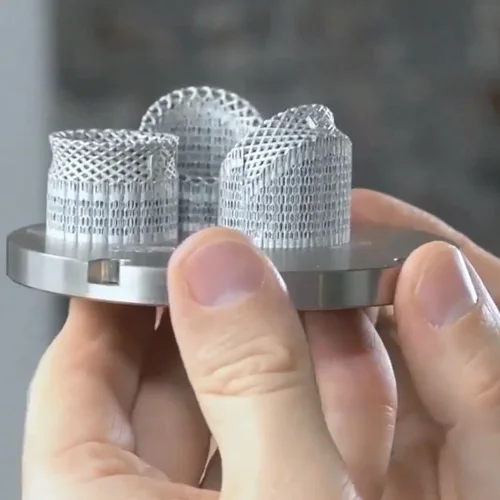 Simply put, the 3D printer creates objects out of a bed of powdered metal by using a powerful laser.
Simply put, the 3D printer creates objects out of a bed of powdered metal by using a powerful laser.
3D Systems, a historical actor on many 3D printing fronts, presents the DMP FLEX 100 as a fast, precise, and affordable metal 3D printer. It offers impressive part repeatability and surface finishes, of around 20 μm and 5 Ra μm respectively. DMP stands for Direct Metal Printing.
The printer comes with 3D Systems’ software 3DXpert All-in-One Software Solution for Metal Additive manufacturing. Their LaserForm metal 3D powders are certified.
Contact manufacturer Get a quote Add to comparison
This compact metal 3D printer is destined for the production of small parts in small quantities. Its material portfolio is especially interesting for medical use cases, namely dental crowns and bridges. EOS certified metal powders include Cobalt-Chrome, Stainless Steel, and Titanium.
The EOS M100’s laser spot is precise enough to provide a great level of detail, backed by 200 W of powder.
Contact manufacturer Get a quote Add to comparison
Originally a Swedish company, Arcam was acquired by GE Additive a few years ago. The Arcam EBM Spectra L is up to 20% faster than its predecessors and is able to reduce part costs by around 10%.
This metal 3D printer is dedicated to Titanium 3D printing, but Copper is in the pipeline as well. Its laser beam power is equal to 4.5 kW, partly explaining the printer’s high melting capacity and productivity. Common applications for this printer include orthopedic implants and parts for the aerospace industry.
Contact manufacturer Get a quote Add to comparison
Concept Laser is the company behind GE Additive’s M2 Series 5. It offers an easy, optimized workflow, with a separate processing chamber and handling area that is integrated into the system. This closed-loop material system ensures a safe environment that is free of powder for the operator.
The M2 metal additive manufacturing solution is compatible with a range of metals, from Stainless Steels to Aluminum, Nickel, Titanium, and Cobalt-Chrome.
Contact manufacturer Get a quote Add to comparison
The RenAM 500E is Renishaw’s entry-level metal additive manufacturing solution. It offers a relatively large build volume and powder can be handled via a dedicated glove box to avoid powder from getting free.
This system is also equipped with an oxygen sensor and a proprietary emission-filtering system branded SafeChange™.
Contact manufacturer Get a quote Add to comparison
Officially established in 2006, SLM Solutions has been a historical player in the powder bed fusion industry for many years. The SLM 125 boasts an open software architecture that allows users to tweak the system’s parameters according to specific use cases, materials, and general needs.
Options such as laser monitoring and melt pool monitoring are available for businesses that require full transparency and control over their production series.
Contact manufacturer Get a quote Add to comparison
The TruPrint 1000 is TRUMPF’s most compact metal 3D printing system, with a 100mm-tall cylindrical build volume.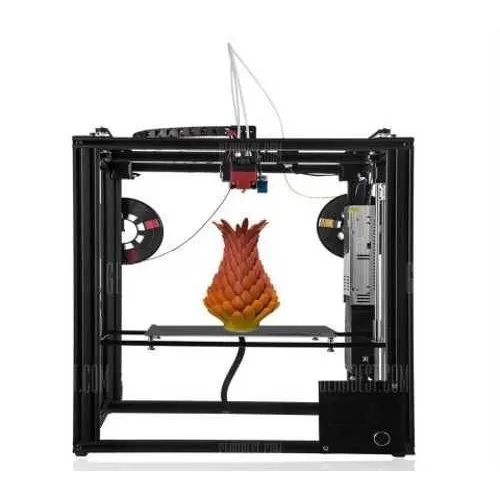 It is suitable for the production of small parts and prototypes, and even small production series when equipped with the multilaser option that increases the printer’s speed.
It is suitable for the production of small parts and prototypes, and even small production series when equipped with the multilaser option that increases the printer’s speed.
This metal 3D printer can be operated remotely via a tablet application, which also gives access to its onboard camera stream.
Contact manufacturer Get a quote Add to comparison
The Velo3D Sapphire is a high-volume metal 3D printer from the US designed for production series. This metal 3D printer features Velo3D’s Intelligent Fusion technology to allow for complex geometries and 0° overhangs.
The system is also equipped with a range of metrology sensors that measure each and every layer that is 3D printed.
Contact manufacturer Get a quote Add to comparison
The XM200C is Xact Metal’s entry-level metal 3D printing solution. It is suitable for both research purposes and small production series. The XM200C benefits from a proprietary Xact Core gantry system for precise movements with a fusing speed of up to 500 mm/s.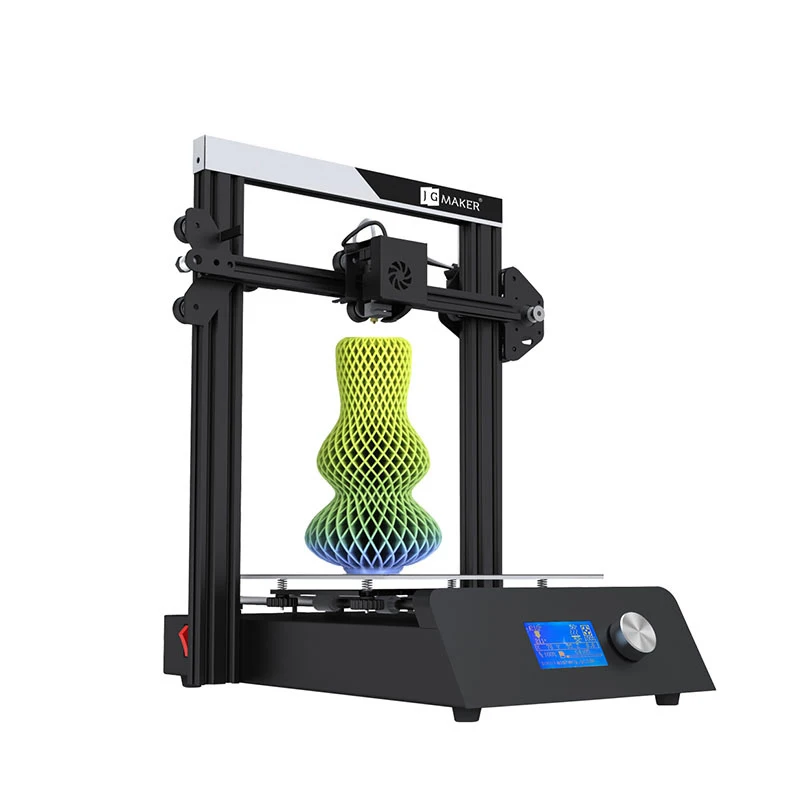
Xact Metal offers their own materials, branded Xact Powder, including various Stainless Steels, Super Alloys, Tooling Steels, Aluminum, Titanium, Bronze, and Copper. Advanced users are able to use their own metal powders if needed.
Contact manufacturer Get a quote Add to comparison
Metal material jetting and binder jetting 3D printers
Material jetting 3D printers are equipped with various inkjet printheads (somewhat similar to 2D printing) that jet material onto a surface. The material then hardens, and another layer of “metal ink” is jetted on top.
Binder jetting is a similar process, but it is a binding agent that is jetted atop a layer of powder.
The Production System by Desktop Metal was designed for mass production. It is advertised by Desktop Metal as being a fast, cost-effective metal additive manufacturing solution, with a cost per part up to 20 times lower than with other metal 3D printing systems.
This Desktop Metal 3D printer is equipped with over 16,000 nozzles that are mounted onto a “print bar” that recoats the build plate with powder at the same time, hence explaining the technology’s name: Single Pass Jetting™.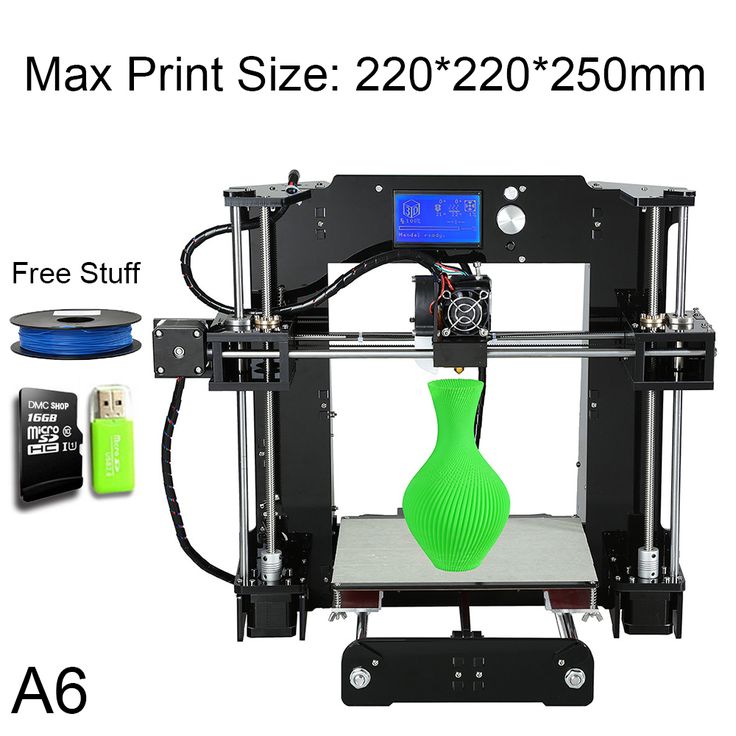
Contact manufacturer Get a quote Add to comparison
Digital Metal, a Höganäs Group company, creates incredibly detailed metal parts with their DM P2500 system. It is able to print 3D metal parts with an accuracy as high as 0.001mm (1µ), and with a medical-grade surface quality of around 0.006mm (6µ).
Another interesting feat to point out is that almost 100% of leftover powder can be recycled for future prints. This metal AM machine is able to churn out serial production series efficiently and reliably; one of the company’s first DM P2500 printers has been running 24/7 since 2013, according to Digital Metal.
The Digital Metal DM P2500 is a certified metal 3D printer (CE and UL) that is compatible with certified metal materials (ISO 22068).
Contact manufacturer Get a quote Add to comparison
Australian manufacturer SPEE3D has developed an impressively fast metal 3D printing technology called Supersonic Deposition. The technology is based on metal cold spray, using compressed air to “jet” metal powder through a nozzle at high speeds.
This enables the LightSPEE3D to 3D print at up to 100 grams per minute and with a range of metals including copper.
Contact manufacturer Get a quote Add to comparison
XJet developed an impressive, proprietary jetting technology they call NanoParticle Jetting™. This inkjet method disperses millions of tiny droplets that contain nanoparticles of solid metal. The liquid material comes in cartridges that are easy to insert into the printer.
After being printed, the metal parts must go through support removal and sintering processes to attain their final form.
Contact manufacturer Get a quote Add to comparison
DED: Directed Energy Deposition metal additive manufacturing systems
Directed Energy Deposition (DED) is comparable to filament extrusion. The metal material is pushed through a special nozzle, like with FFF/FDM, but a powerful laser beam solidifies the material at its deposition point.
Formalloy produces a range of metal DED 3D printers with up to 5 axes of motion.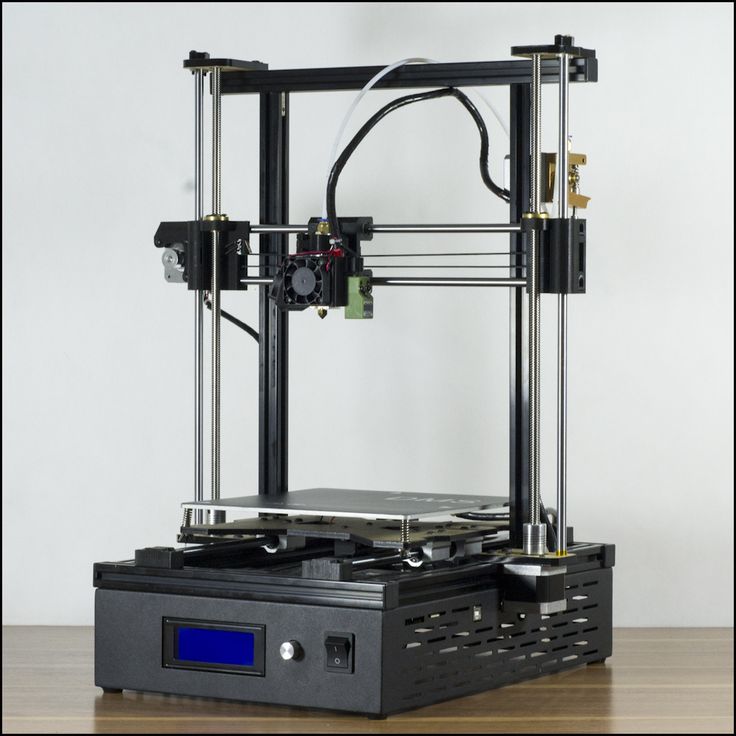 They can be used to produce metal parts but also to repair or clad existing parts.
They can be used to produce metal parts but also to repair or clad existing parts.
Different laser wavelengths are available, as well as different build volumes: 200 x 200 x 200 mm, 500 x 500 x 500 mm, and 1000 x 1000 x 1000 mm. Metal 3D printers from Formalloy can be customized depending on company requirements.
Contact manufacturer Get a quote Add to comparison
Alternative metal 3D printers and special mentions
Hybrid metal manufacturing systems
Some manufacturers are specialized in hybrid metal manufacturing systems. They combine both subtractive and additive manufacturing methods, often with robotic arms that are able to move on more than three axes.
Some of the biggest actors on the hybrid metal AM system market are:
- Gefertec (Germany)
- DMG Mori (Germany)
- Matsuura (Japan)
- Sodick (United States)
XXL-sized metal 3D printers for industrial production
For those that require very large metal parts, there are several huge, industrial machines that offer gigantic build volumes for industrial production.-kupit-v-soin-store.ru-4.png) To name a few:
To name a few:
- Sciaky EBAM 300
- Titomic TKF1000
- ADC Aeroswift
- ADIRA AddCreator
- Fabrisonic SonicLayer 4000
- ExOne X1 160PRO
- InssTek MX-600
- BeAM Modulo 400
- Optomec Lens CS 600
- Additive Industries MetalFAB1
Metal 3D printers from China
There has recently been a lot of growth in the metal 3D printer market in Asia, and more specifically in China. Some Chinese brands have been upping their game in that respect, providing industrial-grade metal 3D printing options:
- Farsoon
- ZRapid Tech
- Shining 3D
- Wiiboox
However, we feel that they are not yet playing in the same league as the 3D printers from our main selection, mostly due to a lack of distribution networks, after-sales service and training, and other factors which tend to matter when considering them together as a whole.
R&D metal 3D printers for labs
In certain cases, metal 3D printers are used for research purposes to develop and test new materials. There are a few machines that are specifically designed for this:
There are a few machines that are specifically designed for this:
- Open Additive PANDA-6”
- Freemelt ONE
- Sharebot metalONE
Pros and cons of metal 3D additive manufacturing
Benefits of 3D printing metal parts
- On-demand production: Metal additive manufacturing offers more flexibility and control over the production line.
- Complex designs made possible: With 3D printing technology, it is possible to create highly detailed and intricate parts that would have to be broken down into several pieces with traditional methods.
- Waste reduction: Compared to CNC milling, for example, metal AM produces much less waste as it only consumes the material needed for a certain part. This is more true for extrusion-based methods than it is for powder-based methods, where it isn’t always possible to re-use 100% of unsintered or unbinded material.

- Lighter parts: Whereas metal parts are usually completely solid infill-wise with other methods, 3D printing allows parts to be more or less hollow without undermining their strength and resistance.
- Cost-effectiveness: All the above benefits of metal 3D printing can inherently reduce costs per part, although high metal 3D printer prices do represent a significant entry barrier. Reaching a positive return on investment can take a while depending on your throughput.
Limits of metal 3D printing
- Metal 3D printing prices: Metal AM systems are still quite expensive, as are metal powders and metal filaments. There are hidden costs, too (e.g. energy consumption, learning curve, etc.).
- Environmental constraints and safety precautions: Most metal 3D printers have a large footprint and require specific operating environments with controlled temperatures, hygrometry, and more.
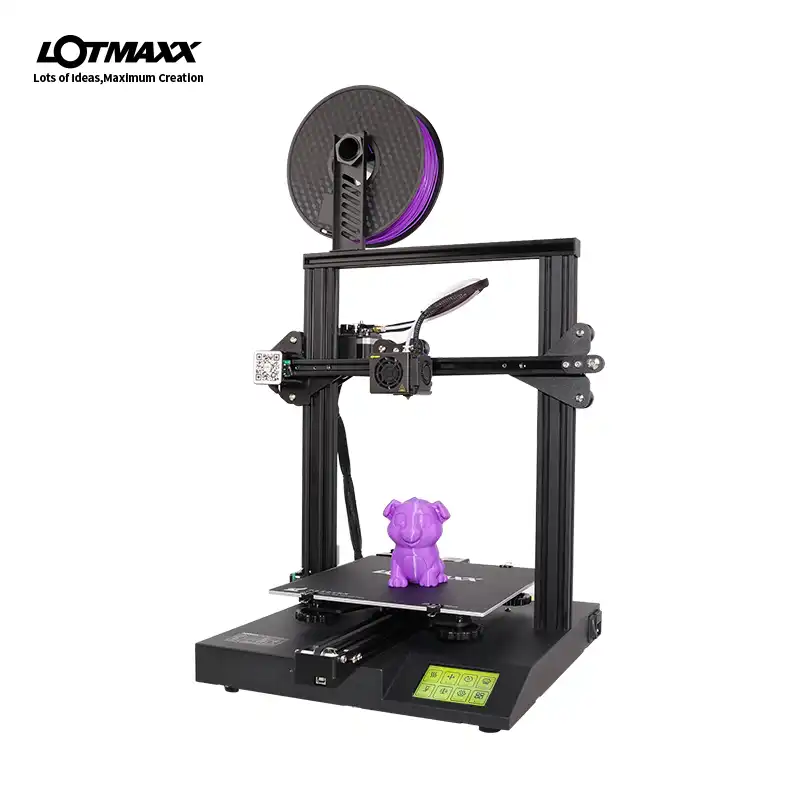
- Post-processing: In many cases it is necessary for parts to be post-processed, whether it’s debinding and sintering or finishing touches for surface quality.
- Physical properties: It can be difficult to achieve the same physical properties that traditionally manufactured metal parts have. There are a number of factors (e.g. anisotropy) to take into account during the design process and file preparation before even trying to 3D print a certain part.
Metal 3D printing materials
Which metals can you 3D print?
A growing number of metals and metal alloys can be 3D printed. These are the main ones:
- Aluminum
- Titanium
- Nickel, Inconel
- Copper
- Bronze
- Cobalt, Cobalt-Chrome
- Steels (tooling, maraging, stainless)
- Precious metals (gold, silver, platinum)
Which metal 3D printing material formats are available?
Metal 3D printing material can be found in various formats, catering to different metal 3D printing methods.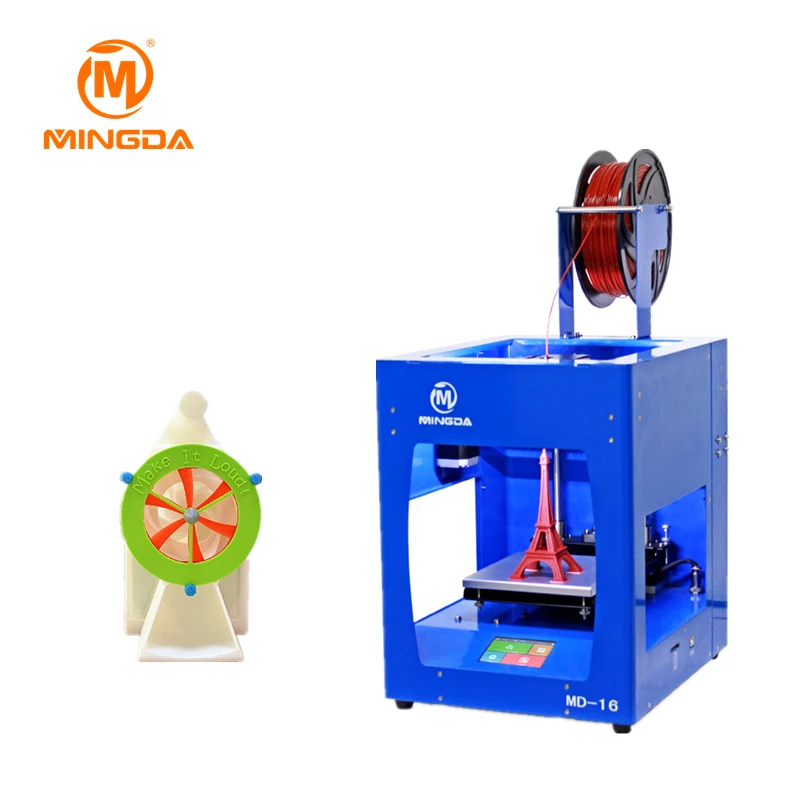 The most common are:
The most common are:
- Powder
- Wire
- Filament
It is also possible to find metal 3D printing resin as well as metal sheets for lamination-based 3D printers.
Metal 3D printer price: how much does a metal 3D printer cost?
Industrial metal 3D printer prices generally range from about $30,000 to over one million dollars for the most premium, industrial-grade metal additive manufacturing systems.
Additional costs to consider are the materials for metal 3D printing, which can cost a few hundred USD/kg, as well as costs linked to post-processing (tools, time, etc.).
Applications for metal AM systems
There are thousands of possibilities and use cases for metal 3D printing in a wide range of industries. A few industries have been incrementally using metal AM:
- Aerospace
- Automotive
- Medical
Whether it’s for tooling, replacement parts, or final products, many businesses can benefit from metal 3D printing.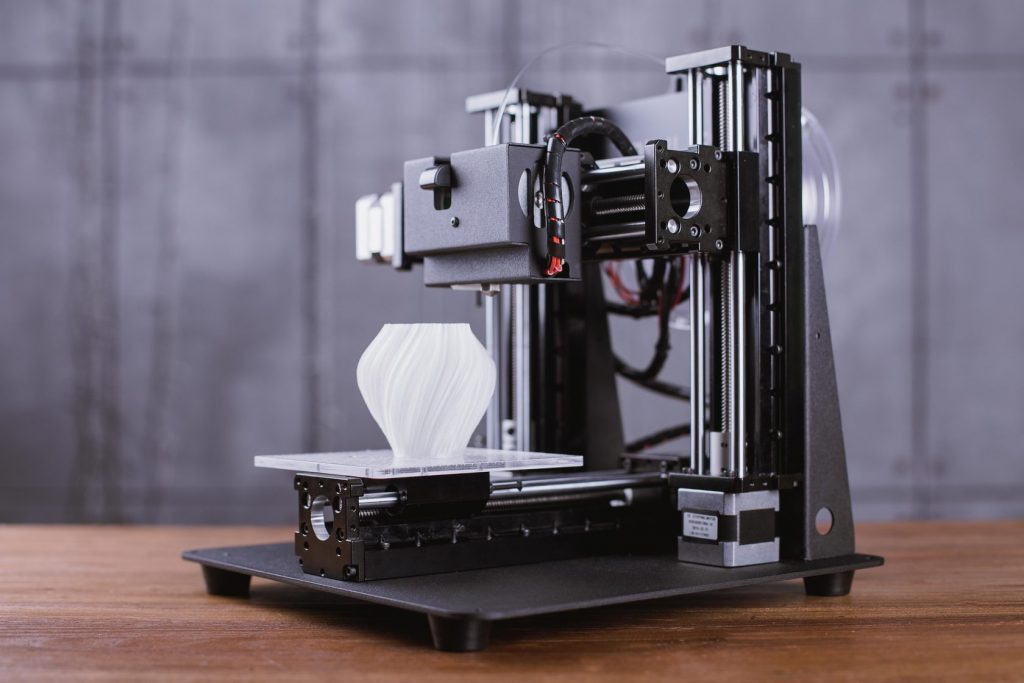
However, metal additive manufacturing isn’t necessarily beneficial for every single metal part. Although some metal 3D printing systems have a relative capacity for serial production, it is generally cheaper to keep using traditional methods for simple parts.
For cases where complex geometries, rapid prototyping, and mass customization are required, metal AM is convenient and efficient.
Metal 3D printing services: order 3D metal parts online
For professionals with limited office space and human resources, low budgets, and/or few needs of custom parts and prototypes, metal 3D printing services can be an ideal solution.
These additive manufacturing service companies own a variety of high-quality 3D printers with different technologies, and their professionals are experts in 3D printing. It is possible to order metal 3D parts on-demand, without acquiring a 3D printer or having to buy a certain material for one-time use.
Here are some of the most trusted 3D printing service providers that offer metal printing services:
- Sculpteo
- Shapeways
- Hubs (ex 3D Hubs)
- Stratasys
- i.materialise
- Protolabs
Metal 3D printing technologies and acronyms
Many manufacturers develop proprietary variations of existing technologies and label them their own registered names:
- Powder Bed Fusion (PBF): DMLS (Direct Metal Laser Sintering), DMP (Direct Metal Printing), LaserCUSING, LBM (Laser Beam Melting), LMF (Laser Metal Fusion), SLS (Selective Laser Sintering), SLM (Selective Laser Melting)
- Directed Energy Deposition (DED): DMT (Direct Metal Tooling), EBAM (Electron Beam Additive Manufacturing), EBM (Electron Beam Melting), LENS (Laser Engineered Net Shaping), LMD (Laser Metal Deposition)
- Metal Material Jetting (MJ) or Binder Jetting (BJ): Magnet-o-Jet, Nanoparticle Jetting, SPJ (Single Pass Jetting), Metal Jet
- Metal filament extrusion/Fused Filament Fabrication (FFF): ADAM (Atomic Diffusion Additive Manufacturing), CEM (Composite Extrusion Modeling), FDM (Fused Deposition Modeling), FFD (Fused Feedstock Deposition), FMP (Filament Metal Printing), BMD (Bound Metal Deposition), MIM (Metal Injection Molding)
- Lamination: SL (Sheet Lamination), UAM (Ultrasonic Additive Manufacturing)
- Metal resin 3D printing: DLP (Digital Light Processing), FluidFM, SLA (Stereolithography)
Metal 3D printing FAQ
Is 3D printed metal strong?
Metal 3D printed parts can be as strong (or even stronger) as metal parts created with traditional manufacturing processes such as casting.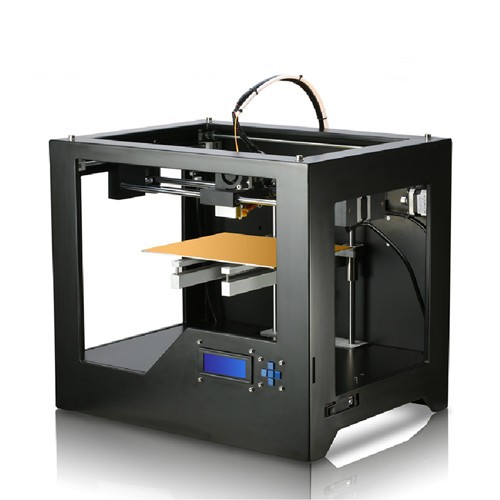 The part’s strength will, however, depend on the metal AM method used and the conditions in which it is 3D printed.
The part’s strength will, however, depend on the metal AM method used and the conditions in which it is 3D printed.
When was 3D metal printing invented?
Metal 3D printing became possible in the 1990s with the development of Selective Laser Melting technology. However, 3D metal printing only started to gain traction and public interest from around 2010 onwards.
How does metal 3D printing work?
There are several ways to 3D print metal. Layers of metal filament can be deposited one after the other, producing a green part that must later go through debinding and sintering steps. It is also possible to fuse metal powder particles together with a laser, or with an inkjet printhead that deposits drops of binding material onto the powder.
Metal 3D Printer Cost – Top 5 Metal Printer Reviews| Buyer's Guide (2021)
Metal 3D printing refers to the selective laser melting and direct metal laser sintering. These processes use metal powders to produce complex and one-piece metal parts.
These processes use metal powders to produce complex and one-piece metal parts.
Are you interested in metal 3D printing? Looking for the best metal 3D printer that fits your budget, space and experience level?
If you are, then this page is for you! We have everything you need about this technology. Whether you’re a newbie or are already knowledgeable and are looking for your first metal 3D printer, we’re here to help.
By the end of this article, you should understand the metal additive manufacturing or printing process using stainless steel, what it does and what’s the best machine for you because we also include the best metal 3D printers for sale!
Contents
- 1 What is Metal 3D Printing
- 2 3D Printer that Prints Metal
- 2.1 Best Industrial 3D Printer Metal
- 2.1.1 #1 HP Metal Jet Review
- 2.2 #2 EOS M 100 Review
- 2.3 Desktop Metal 3D Printer
- 2.
 3.1 #3 Markforged Metal X Review
3.1 #3 Markforged Metal X Review
- 2.
- 2.4 #4 Desktop Metal Studio Review
- 2.5 Cheapest Metal 3D Printer
- 2.5.1 #5 Airwolf 3D EVO Additive Manufacturing Review
- 2.1 Best Industrial 3D Printer Metal
- 3 Metal 3D Printer Cost
- 4 Metal 3D Printing Service
- 5 Metal 3D Printing Materials
- 6 Conclusion
This additive manufacturing printing process covers the basic principles of SLM (Selective Laser Melting) and DMLS (Direct Metal Laser Sintering). Both processes use metals in granular form.
The only difference between the two comes down to the fundamentals of the particle bonding process.
SLM printing process uses metal powders with a single melting temperature and fully melts the particle while
Meanwhile, in DMLS or direct metal laser sintering, the powder is composed of materials with variable melting points that fuse on a molecular level at elevated temperatures.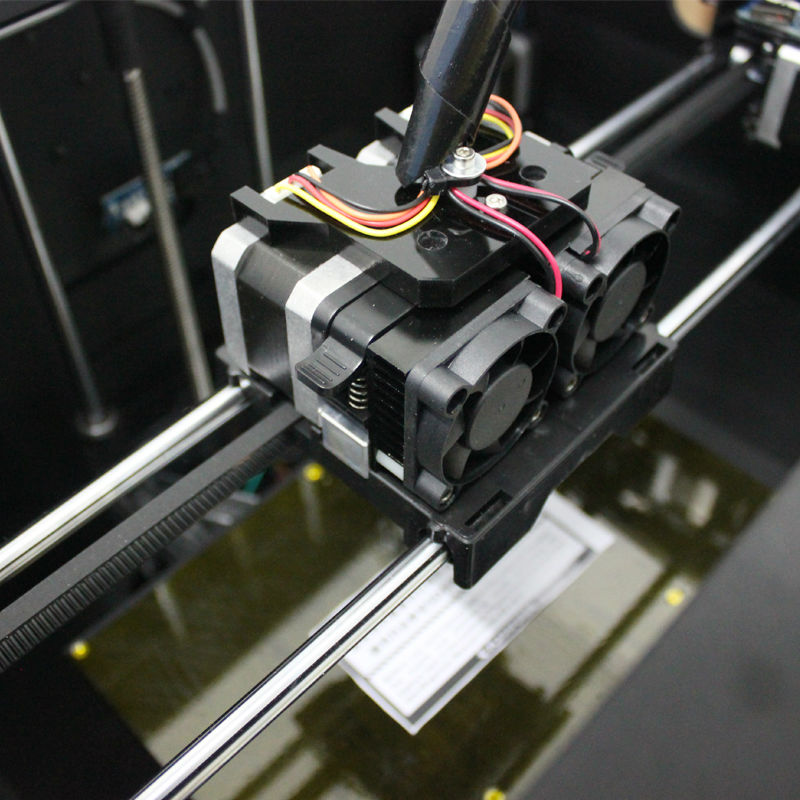
Both SML and DMLS are used in industrial applications to create end-user engineering products. In some cases, they are collectively referred to as metal 3D printing.
Metal Additive Manufacturing is a printing process also known as metal 3D printing. This technology offers unrivaled design freedom with the ability to manufacture parts from a wide range of materials.
A number of components that were impossible to create a few years ago can be made to high standards using 3D printing metal powder.
Additive manufacturing or 3D printing allows you to create a three-dimensional part layer by layer from a polymer or metal-based material.
Traditionally, metal and plastic objects can be a wasteful process. For instance, when aircraft manufacture metal parts, the majority of the material up to 90% is cut away.
With metal additive manufacturing printing process, this can be done with lesser energy and waste. 3D printed metals are 60% lighter than their machined counterparts. The aviation industry saves billions of dollars through this weight reduction due to fuel.
The aviation industry saves billions of dollars through this weight reduction due to fuel.
Unfortunately, metal 3D printers are very expensive. But this offers a lot of benefits from the traditional metal manufacturing processes.
How Does Metal 3D Printing Process Work?
Metal Additive Manufacturing works in the following process.
The build plate chamber is filled with inert gas to minimize the oxidation of the metal powder. It is then heated to the optimal build temperature.
A thin layer of metal powder is spread over the build plate platform and a high power laser scans the cross-section of the component, melting (for fusing) the metal particles together and creating the next layer. The entire area of the model is scanned so the part is built fully solid.
When the scanning process is complete, the build platform moves downwards by one layer thickness and the recoater spreads another thin layer of metal powder. The process is repeated until the whole part is complete.
To achieve the necessary specifications or improve the properties of surface quality, geometrical accuracy and mechanical properties, a post-process is necessary. Thus, you have to add metal-machining finishes to meet the requirements of surface quality and geometry.
Following the removal of support structures to separate the parts from the building platform, you can mill, drill or polish. For instance, internal surfaces such as those in internal or tempering channels can be polished using abrasive flow machining.
Here are the other ways to improve the surface quality of your 3D printed metal during the additive manufacturing process.
Heat treatment. This is used to improve the mechanical and tactile properties of the surface.
Electropolishing. This electrochemical treatment significantly improves the surface finish of metal 3D printing. This is used to minimize microroughness and reduce the risk of dirt or product residues. This also improves the cleanability of the surfaces.
This also improves the cleanability of the surfaces.
This is also used for deburring, brightening and passivating for surfaces exposed to abrasive media. This process doesn’t involve mechanical, thermal or chemical impact. This can also be used to treat small and mechanically fragile parts.
3D Printer that Prints MetalThere are a number of 3D printers for metal in the market today and pretty sure, you have reached this part because you are looking for one. We won’t disappoint you because below you will find the top all-metal 3D printers that will surely suit your requirements in different categories.
Best Industrial 3D Printer MetalThose in the 3D printing industry should rejoice because a new machine is here to boost your business. A 3D printer that uses metal is now available to help you print metal parts quickly and conveniently with lesser waste and at a reduced price.
Here’s our top pick industrial metal 3D printer for additive manufacturing.
Click here To Check Price
HP is popular in the printing world, but they take their game at a higher level when they joined the market for metal 3D printing by producing a first-rate metal 3D printer in the form of HP Metal Jet.
What I love most about this all-metal 3D printer is its usability. This 3D printer is designed to propel your business with its most advanced metal 3D printers for mass production. It can produce high volumes of parts and large parts at a lower cost.
It can also accelerate product development cycles with multiple iterations in just days. It produces parts faster, in fewer steps with no debinding required and eliminates tooling.
Most importantly it can manufacture complex metal injection molding (MIM) parts with reduced cost. HP Metal Jet technology is a great innovative medical device and a viable 3D technology for the industrial-scale production of metal parts.
It’s huge, so you need to have enough space to store it.
This 3D metal printer delivers extreme performance, high quality and consistent reliability which is just worth it considering its hefty price.
Personally, I find this 3D printer expensive. This is priced at $399,000. So, basically this is not for home use but it’s great if you are in the industry and is planning to use this for business.
Considering the things that this can do and the quality that it was built, you will not regret choosing this. I highly recommend this especially for those in the 3D printing business.
Specifications
- Bed Size: 430 x 320 x 200 mm
- Price: $399,000
- Layer Height: 50 – 100 microns
- Resolution: 1200 x 1200 dpi
- Industry: Best for Aerospace, Automotive, Consumer products and medical
- Materials: Stainless Steel (17-4 PH and 316L)
- Product dimension: 2178 x 1238 x 1448 mm
Pros
- Works fast
- Up to 50x more productive
- Low-cost, high-quality final parts
- Best in class price-productivity
- Finished parts with isotropic properties that exceed ASTM and MPIF standards
- High reusability of materials that reduces material cost and decrease waste
- Density after sintering is greater than 93%
Cons
- Expensive
- Cabinet-size so you need enough space to store this
Check Price
Go to top
#2 EOS M 100 Revieweos metal printer
Click here To Check Price
EOS 100 is from a German manufacturer and was designed for entry-level industrial metal 3D printing without you breaking the bank. This is only among the few metal 3D printers that you can purchase below $250,000.
This is only among the few metal 3D printers that you can purchase below $250,000.
This commercial metal 3D printer is another affordable machine. This is manufactured by a company based in Frankfurt, Germany. This machine was introduced in 2015. This works using the Direct Metal Laser Sintering (DMLS).
I’m impressed with its built and size. EOS M 100 has a small build size with a maximum of 100 × 100 × 95 mm only. However, it can build items with complex geometries out of several different metals including EOS CobaltChrome SP2, EOS Stainless Steel 316L, EOS Titanium Ti64.
Despite its small build volume, its performance is impressive. It can produce approximately 70 dental crown and bridges in three hours. Yes, EOS M 100 is that fast. This is designed to be cost-efficient for small quantities of production.
In addition, it features a 200 Watt fiber laser with beam quality and performance stability for optimum and consistent processing conditions that make the parts reproducible. It has a smaller laser spot with excellent detail resolution too to produce high quality, highly complex and delicate components.
It has a smaller laser spot with excellent detail resolution too to produce high quality, highly complex and delicate components.
The system also works smartly with its build space, efficient recoating and exposure strategy that reduces the non-productive periods and contributes to the efficient production of smaller quantities, instead.
As for its design, it has a modular interior structure. You can quickly dismantle or set it up. The materials can also be replaced easily and maintenance is a breeze. You can perform it quickly.
For your safety, this is designed with a closed frame. However, it may take time until you’ll get comfortable using this. This doesn’t include automatic calibration, heated print bed, or an LCD screen. But it has 3D scanners and touchscreen for easier operation.
As for connectivity, this is only limited to Ethernet. Most machines allow you to print using UBS, SD card, Bluetooth or Wi-Fi. When it comes to this matter, EOS M 100 is a bit behind.
Despite the things it lacks, I still love this metal 3D printer, from its size, price, performance and quality of output. I am also satisfied with its price.
Specifications
- Max Build Size: 100 × 100 × 95 mm
- Focus diameter: 40 µm
- Price: $ 100,000 – $ 250,000
- Technology: Powder (SLS, SLM…)
- Dimension: 800 × 950 × 2250 mm
- Weight: 580 kg
Pros
- Closed frame for safety
- Touchscreen for easier operation
- 3D scanners
- Ethernet for connectivity
- Fits in your office room
- Easy to set up
- Tried and tested quality
Cons
- Limited connectivity. Only allows ethernet
- Doesn’t have automatic calibration
- Sing extruder
- No LCD screen
- No mobile app available yet
Check Price
Go to top
Desktop Metal 3D PrinterIf you need a 3D metal printing machine that fits your workspace then desktop metal 3D printer is for you. In this section, we are about to give you the top metal 3D printers in this category.
In this section, we are about to give you the top metal 3D printers in this category.
Click here To Check Price
Markforged experienced an unparalleled success after releasing its first marquee product, Markforged Mark One. The brand went on and venture in producing metal printing 3D printers in the form of Metal X.
The first thing I noticed in this brand is that it’s a lot cheaper than HP Jet Metal by about $300,000. So, if your budget is short and you can’t afford HP’s metal 3D printer then this is a more affordable option.
Although this is cheaper, you should not underestimate Markforged Metal X in terms of performance. This is equipped with a new innovative process to create parts made with the machine using its own technology Atomic Diffusion Additive Manufacturing (ADAM).
ADAM involves the process of using a bound metal powder rod embedded inside a plastic filament. Similar to other 3D printing processes, the part is built up layer by layer except with compensations made for shrinkage.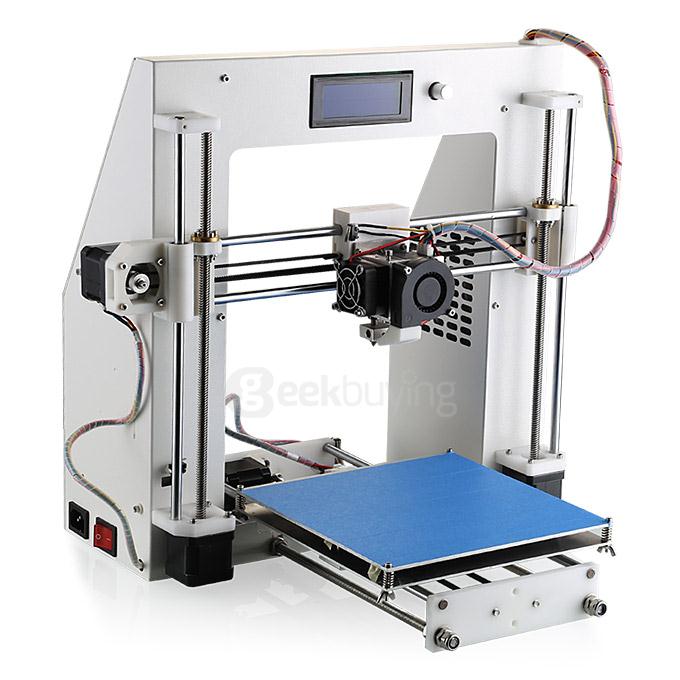
I’m personally impressed with ADAM technology because it allows for closed-cell structures. Prior to this, you need an escape hole for the unused powder but with Metal X, the powder just burns away. Thanks to this, you can create complex enclosed internal structures to create light parts without sacrificing its strength.
In Markforged Metal X, the object goes through three stages. The final stage, Sinter-1, makes the object 99 percent dense and on par with high-end DMLS machines. Although you produce quality output with these three steps, you still need extensive-post processing to see the best results.
What I love about this is that it can process various metal powders including Stainless Steel 17-4 and 303, Aluminum (Beta) 6061 and 7075, Tool Steel (Beta) A-2 and D-2, IN Alloy (Inconel) 625 (Beta), and Titanium Ti-6Al-4V (Beta). It is also equipped with a versatile proprietary cloud-based software called Eiger.
Perhaps, if there’s something that this 3D printer lacks it is poor connectivity. It has no USB, Wi-Fi, Bluetooth, SD card or ethernet.
It has no USB, Wi-Fi, Bluetooth, SD card or ethernet.
Despite this, Markforged Metal X remains a good machine if you want to start printing with metal powders like stainless steel.
Specifications
- Build Volume: 300 x 220 x 180 mm
- Max Part Weight: 10kg
- Resolution: 50 micron – 200 micron
- Connectivity: Ethernet or Wi-Fi
- Print Engine: Atomic Diffusion Additive Manufacturing (ADAM)
- Print Bed: Heated, Vacuum Sealed Print Sheet, Auto Bed Leveling
- Print Preparation: Eiger Software
- File type: STL
- Weight: 75kg
Pros
- More affordable than other 3D printers
- ADAM technology
- Has its own proprietary cloud-based software (Eiger)
- Can process several metal powder
- Operates in three processes
Cons
- You still need to do extensive post-processing
- Poor connectivity
Check Price
Go to top
#4 Desktop Metal Studio Review
Click here To Check Price
Desktop Metal Studio 3D printer is the first office-friendly metal 3D printing solution.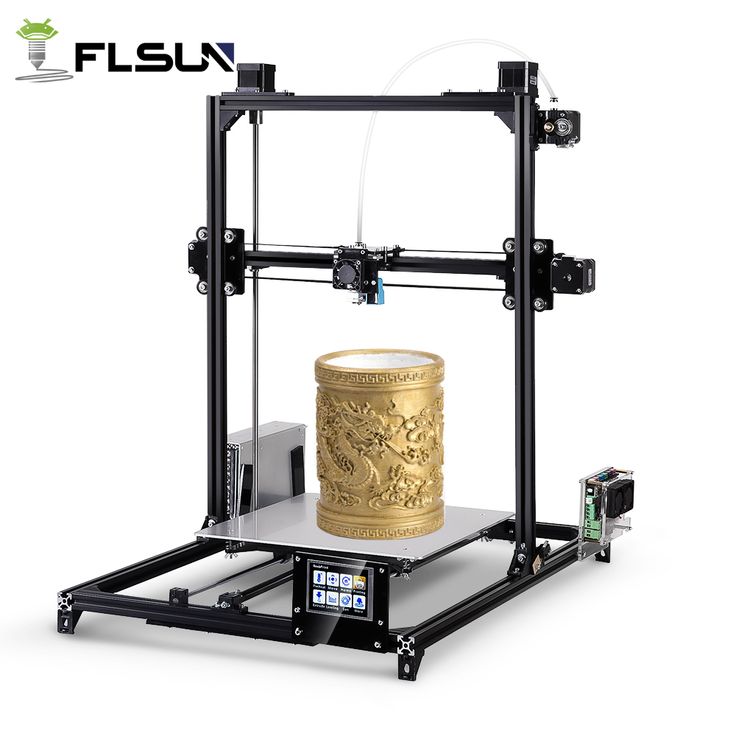 This will be a great addition to your devices in the office especially if you want to join metal 3D printing.
This will be a great addition to your devices in the office especially if you want to join metal 3D printing.
This metal 3D printing machine operates differently than the laser-based system that selectively melts metal powder. Instead, this extrudes bound metal rods similar to how FDM printer works which eliminates the safety requirements often associated with metal 3D printing.
Don’t worry about any risks because this is designed to be safe in the first place. It comes with a closed-cell infill for lightweight strength. Thanks to this, you can move this conveniently when needed.
One of the best things about this machine is its price because this is much cheaper than most brands. At $120,000 Desktop Metal Studio System offers metal additive manufacturing (AM) at a fracture of the size and cost of typical industrial metal 3D printers. If you will only get the metal 3D printer, then it will only cost you $60,000.
This machine uses Desktop Metal’s patented Bound Metal Deposition (BMD) method which is similar to Fused Filament Fabrication (FFF) technology. BMD takes rods made of powdered metals bound in a polymer binder then extrudes it layer by layer. To prevent metal supports from bonding to metal parts, MBD employs a second extruder to deposit ceramic interface media between the two.
BMD takes rods made of powdered metals bound in a polymer binder then extrudes it layer by layer. To prevent metal supports from bonding to metal parts, MBD employs a second extruder to deposit ceramic interface media between the two.
However, if you want to see the best results, you should get the entire Studio System. The system is a three-part solution that automates metal 3D printing. Aside from the 3D printer, it has a debinder that prepares green parts for sintering that doesn’t require external ventilation and is safe for an office environment. So, you don’t have to worry about your space. It also includes a fully-automated furnace with built-in temperature for uniform heating and cooling.
The good thing is that getting it doesn’t cost as much as the expensive metal 3D printing machines. The three machines can also fit neatly alongside each other. However, you would need a bigger space for this.
Overall, I’m still pleased with Desktop Metal Studio 3D Printer. I love its size, the quality of prints and of course, the price.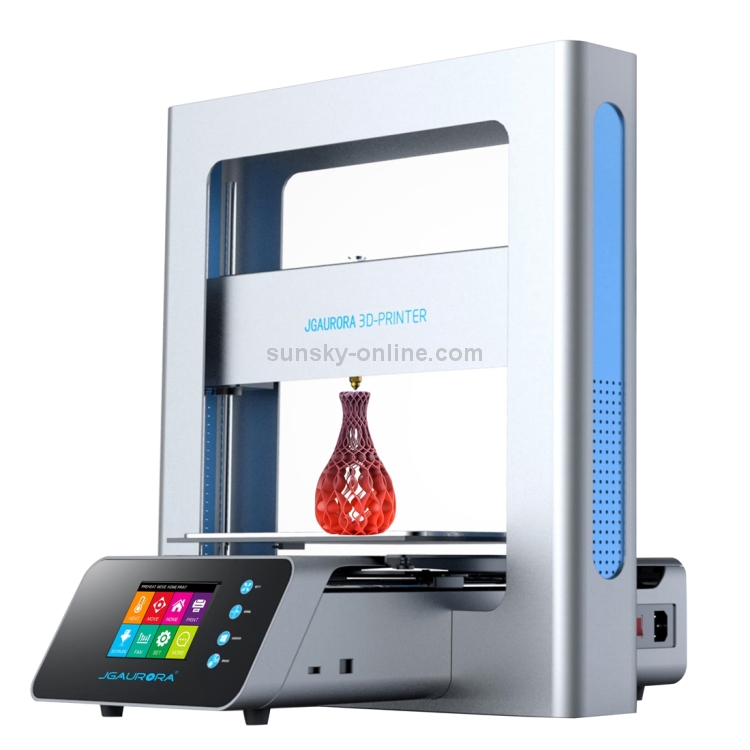 And I tell you even if you purchase the entire Studio system, it won’t cost you as much as HP Metal Jet, so yes it is affordable.
And I tell you even if you purchase the entire Studio system, it won’t cost you as much as HP Metal Jet, so yes it is affordable.
Specifications
-
- Build envelope: 30 x 20 x 20 cm (12 x 8 x 8 in)
- Max build rate: 16 cm³/hr (1 in³/hr)
- Print Engine: Bound Metal Deposition (BMD)
- Build Volume: 289 x 189 x 195 mm
- Printer Size: 948 x 823 x 529 mm
- Print System: Dual extrusion
- Resolution: 50 microns, 100-220 microns
- Connectivity: Ethernet or Wi-Fi
- Materials: 17-4 PH, AISI 4140, h23, 316 L, Copper, Inconel 625
Pros
- Fits in your desktop
- Affordable compared to other brands
- Bound Metal Deposition (BMD) method
- Heated print bed
- Automatic calibration
- Closed frame
- Touchscreen
- WiFi
- Ethernet
- Produces high-quality parts
Cons
- The whole system can be costly
- The whole system can take space
Check Price
Go to top
Cheapest Metal 3D PrinterIt’s difficult to find an affordable metal 3D printer, as this type of machine tends to be so costly. But, don’t be in despair because there are always brands who consider their buyers and would love many to afford their products.
But, don’t be in despair because there are always brands who consider their buyers and would love many to afford their products.
I’m pleased to share with you one of the low cost metal 3D printers in the market — Airwolf 3D Evo Additive!
#5 Airwolf 3D EVO Additive Manufacturing Review
Click here To Check Price
Airwolf 3D EVO Additive Manufacturing Center is designed to be a professional desktop metal 3D printer. But aside from the size, it’s one of the few cheap 3D printers you will ever find in the market, so we put this machine in this category.
Airwolf is more affordable than its competitors. In fact, it’s way cheaper as this costs less than $10, 000. You can hardly find a metal 3D printer at this price. But mind you, you should not underestimate this because it is not inferior. Its capabilities are not limited. In fact, it’s as competitive as the other more expensive brands.
This metal 3D printer is fast, strong and accurate than most desktop metal 3D printers. In addition, it is safe to use because it is equipped with a closed frame and heated interior with air cleansing system to reduce UFP/VOC emissions.
In addition, it is safe to use because it is equipped with a closed frame and heated interior with air cleansing system to reduce UFP/VOC emissions.
This low-cost metal 3D printer has what it takes to help you build metal parts. It has a 7-inch touchscreen for more intuitive user experience and dual extrusion for faster operation. Thanks to this, you can print two materials simultaneously.
For a more enjoyable and convenient 3D printing experience, this printer is programmed to be smart. It has a PartSave/FailSafe functionalities that enable the EVO to go back to 3D printing where it left off in case of a power or filament outage. With this, you’ll have peace of mind that your project won’t just be lost in case of unexpected power failure.
This metal 3D printer is also versatile for its price. It can process PLA, ABS, other plastics and of course, metal!
For those desperate to try metal 3D printing but has a limited budget, I highly recommend this because it’s cheaper and it works!
Specifications
- Build size: 305 × 305 × 280 mm
- Build volume: 26.
 05 L
05 L - Max print speed: 250 mm/s
- Dimension: 1016 × 762 × 737 mm
- Connectivity: USB
- Technology: Extrusion (FFF, FDM)
- Price: $7,995
Pros
- Heated print bed
- Automatic calibration
- Dual extruder
- Closed frame
- Touchscreen
- 24/7 customer support
- Multi-material compatibility
Cons
- Slow print speed compared to other brands
- Still somewhat feels like “beta”
Check Price
Go to top
Metal 3D Printer CostHow much does a metal 3D printer cost? 3D metal printer price varies. There are cheap and there are expensive ones depending on the features it offers.
In most cases, this depends on what the machine offers. More advanced metal home 3D printers tend to cost more. Also, industrial types are more costly than desktop metal 3D printers.
An industrial 3D metal printing machine cost over $100,000. Meanwhile, desktop 3D metal printing machine price tends to be cheaper. You can buy one below $100,000.
Meanwhile, desktop 3D metal printing machine price tends to be cheaper. You can buy one below $100,000.
Based on the 3D metal printer price list, the cheapest one here is Metal X.
In general, metal 3D printers come in different packages. So, if you are planning to buy a 3D metal printer, you will definitely one that suits your requirements and budget.
Metal 3D Printing ServiceIf you find 3D printing metal price to be too costly but still wish to print 3D metals from time to time, don’t worry, there are 3D metal printing companies that offer metal 3D printing services. You can send them your project and just pay them to get it done.
Here are some businesses that offer metal printing services.
Stratasys Direct Manufacturing
You can conveniently send them your project online. They offer a quote so you will know how much you will pay ahead.
The company made ordering simple with its pick delivery-based pricing, pay with its simplified online options and access its HELP ME CHOOSE feature for automated suggestions for the right materials and technologies for your application.
You can opt for a Quick Print that offers the fastest delivery or lowest price or Stay Classic with post-processing and quality control.
Shapeways
This is another 3D printing marketplace and service company that offers industrial 3D printing service scaled to fit your business. They actually process projects using different materials from strong plastics to polished metals.
The company has produced over a million products yearly from manufacturing to finished goods. You can also save money because they offer competitive pricing and have no minimums.
If you are interested, you can get in touch with their sales team to get a quote for your project. Just fill up a form and they will get back to you as soon as they can.
3D Hubs
This site has a large network of manufacturing Hubs. The service is connected to over 140 countries. It has a wide range of 3D printing metals with applications in multiple industries. The parts are manufactured using the SLM/DMLS or Binder Jetting printing processes.
The parts are manufactured using the SLM/DMLS or Binder Jetting printing processes.
You can request for a metal 3D printing service in the site in three easy steps. First, upload your designs. Second, specify your requirements (turnaround times, prices, materials, etc.). Third, receive the quality parts.
Metal 3D Printing MaterialsMetal 3D printing is used to produce complex and one-piece metal parts with geometries that are impossible to machine. This technology is an ideal technical solution for complex metal parts.
While most 3D printers use filaments, metal 3D printers use different materials – 3D printing metal powder!
Here’s a full range of 3D printer metal powder for sale for metal additive manufacturing that combines both DMLS and EBM (electro beam) technologies.
Iconel. It has mechanical characteristics that enable the production of parts for aeronautics. This material has impressive mechanical and cryogenic properties. This is also great for high-temperature applications, instrumentation parts, process industry parts and more.
This material has impressive mechanical and cryogenic properties. This is also great for high-temperature applications, instrumentation parts, process industry parts and more.
Advantages
- Very good mechanical properties
- Excellent cryogenic properties
- Great for high-temperature and cryogenic applications
- Possible post-treatment
Steel (316L or 1.4404). There are several types of stainless steel including type Ph2 or 316L or maraging steel type MS1. You can create your functional prototypes for aeronautical and medical sectors. On the other hand, maraging steel is tooling steel that can reach 55 HRC after heat treatment.
Advantages
- Excellent strength
- High ductility
- Good thermal properties
- Highly corrosion-resistant
Titanium (TiAl6V4). This features excellent mechanical properties that make it a sought-after material in the aeronautical industry.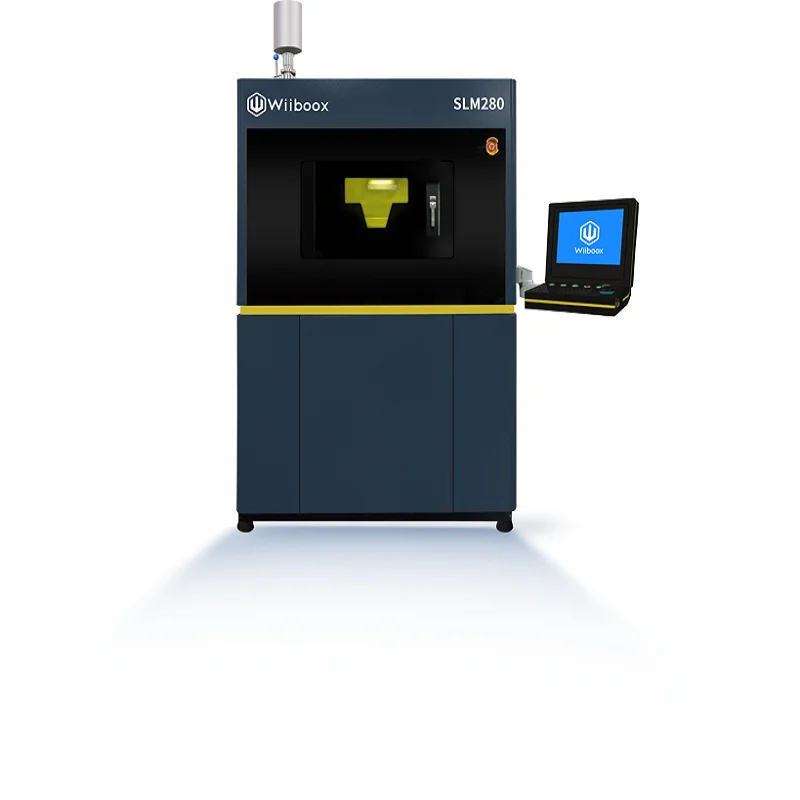 This is compatible and well-adapted in the medical sector especially for implants
This is compatible and well-adapted in the medical sector especially for implants
Advantages
- Excellent mechanical properties with a low specific weight
- Corrosion-resistant
Chrome/Cobalt. This offers numerous advantages and is particularly adapted to functional prototypes. You can use this metal 3D printing material to produce small series, personalized products or even spare parts using this technical material. The CRC2 grade is also used to create dental prostheses. It is also popular in aerospace and motorsports.
Advantages
- Excellent strength
- Outstanding corrosion
- Wear and temperature resistance
Aluminum (AlSi10Mg). This material is an excellent alternative to casting. This is used to create parts with fine walls and complex geometry. This material offers good strength and hardness due to the combination of silica and magnesium.
Advantages:
- Good strength and thermal properties with low weight
- Flexible post-processing possibilities
Metal 3D printers are an asset to every business.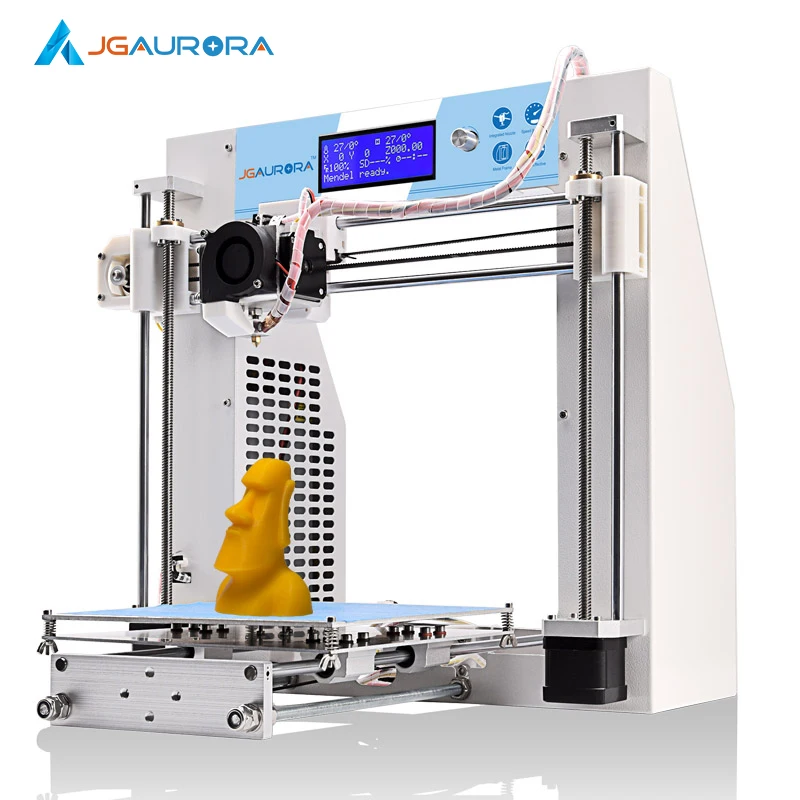 It can help speed up the process and make you more productive. It’s not just for everyone because they are more expensive compared to regular 3D printers.
It can help speed up the process and make you more productive. It’s not just for everyone because they are more expensive compared to regular 3D printers.
However, don’t be in despair as there are also cheap metal 3D printers on the market. Those machines aren’t as advanced as the expensive ones but it has the basic things that you need to produce metal parts.
If you are in need of a metal 3D printer, whether you’re looking for a desktop machine, a powerful or expensive one, start with our recommendations above. If you think that you can’t afford to buy metal 3D printers then you can get a direct metal 3D printing service to get your metal parts done.
If you want to know more about 3D printing, feel free to check out homepage.
References
www.machinedesign.com/3d-printing/what-s-difference-between-metal-3d-printing-processes www.praxairsurfacetechnologies.com/en/components-materials-and-equipment/materials/additive-manufacturing-powders www.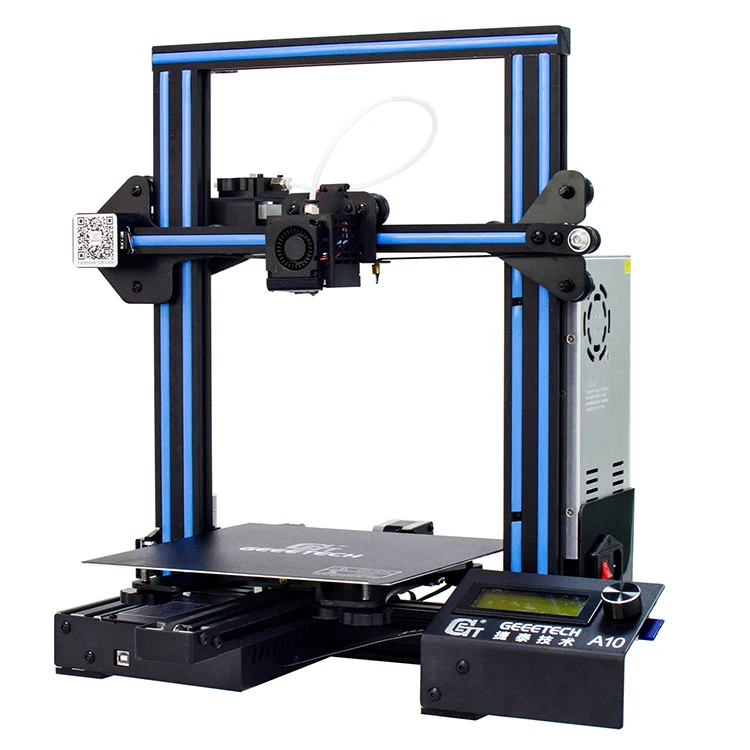 metal-am.com/introduction-to-metal-additive-manufacturing-and-3d-printing/metal-additive-manufacturing-processes www.metal-am.com/introduction-to-metal-additive-manufacturing-and-3d-printing/metal-powders-the-raw-materials www.initial.fr/en/materials/metal
metal-am.com/introduction-to-metal-additive-manufacturing-and-3d-printing/metal-additive-manufacturing-processes www.metal-am.com/introduction-to-metal-additive-manufacturing-and-3d-printing/metal-powders-the-raw-materials www.initial.fr/en/materials/metal
www.3dprinting.com/metal/types-of-metal-3d-printing www.all3dp.com/1/3d-metal-3d-printer-metal-3d-printing www.hp.com/us/en/printers/3d-printers/metals.html www.3dprinting.com/metal/small-metal-3d-printers www.hp.com/h30195/v2/GetPDF.aspx/4AA7-3333EEW.pdf www.aniwaa.com/product/3d-printers/airwolf-3d-evo total3dprinting.org/airwolf-3d-printer-review-does-the-airwolf-have-the-chops www.desktopmetal.com/products/studio/#whats-new www.youtube.com/watch?v=W_jcYga95aY
Precise metal 3D printing on order in Sprint 3D
Metal 3D printing - additive manufacturing of metal products, which is rightfully one of the most promising and rapidly developing areas in 3D printing as such. The technology itself originates from the conventional sintering of materials used in powder metallurgy. But now it has become more perfect, accurate and fast. And today SPRINT3D offers you metal printing on 3 D printer on really favorable terms. But first, a little information about the production process itself and its capabilities.
But now it has become more perfect, accurate and fast. And today SPRINT3D offers you metal printing on 3 D printer on really favorable terms. But first, a little information about the production process itself and its capabilities.
Selective Laser Fusion Technology
SLM or Selective Fusion Technology is a type of direct metal printing that achieves a density of 99.5%. The difference is especially noticeable when compared with models obtained by conventional casting. This indicator is achieved due to the introduction of the latest technologies in the hardware part:
- The use of special rollers for compacting powders and, as a result, the possibility of using powders with a particle size of 5 microns.
- Bulk density increase to help compact end products.
- Creates a rarefied atmosphere of inert gases, which ensures maximum purity of the material, no oxidation, and eliminates the risk of introducing third-party chemical compounds into the composition.

But most importantly, the modern 3 D Metal Printer makes it easy to customize the configuration for printing with a specific metal powder. Thus, even with inexpensive material, you can get a first-class result. But only if you use high-quality modern equipment. And here we are ready to surprise you too!
Metal 3D printing B SPRINT 3D
3D printing with own 3D printers
The largest working area is 280x280x350 mm
layer thickness up to 15 micron
3D with various types of metals
Delivery throughout Russia and CIS countries
installations for 3 D metal print, which we use
Production quality is a key requirement that we set ourselves. Therefore, in our work we use only professional equipment with wide possibilities for metal printing. Let's take a closer look at each of the production units.
Production unit SLM 280HL
SLM 280HL is a development of the German company SLM Solutions GmbH, which uses the technology of layer-by-layer laser melting of powder metal materials.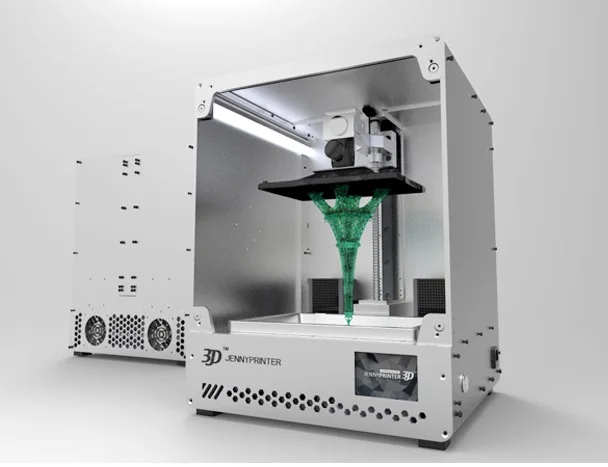 The installation is equipped with a large working chamber and allows you to create 3D objects with dimensions of 280x280x350 mm. Among the main advantages of printing with this unit are:
The installation is equipped with a large working chamber and allows you to create 3D objects with dimensions of 280x280x350 mm. Among the main advantages of printing with this unit are:
- Small minimum thickness of the applied layer - 20 microns.
- Filling the working chamber with an inert gas, which allows you to work with various reactive metals.
- Print speed up to 35 cm/hour.
- Construction layer thickness – 30 and 50 µm.
- Power - 400 W.
A special highlight is the patented powder feed system, which delivers significantly faster print speeds than most production machines in the same price range. We use the following materials in production:
- Stainless steel (domestic 07X18H12M2 (Polema), 12X18H10T and imported 316L).
- Tool steel (imported 1.2709).
- Heat-resistant alloys 08KhN53BMTYu (similar to Inconel 718, produced by Polem) and EP 741 (produced by VILS).

- Cobalt Chrome (COCR)
The SLM 280HL 3D printer can be used to create all kinds of metal components, prototypes and end products. If necessary, we can provide small-scale production.
ProX 100 production unit
ProX 100 is a compact 3 D metal printing unit developed by the American company 3D Systems. It uses direct laser sintering technology, which ensures high speed and precision of production. Among the main characteristics it is worth highlighting:
- The size of the working chamber is 100x100x80 mm.
- Construction layer thickness – 20 and 30 µm.
- Power - 50 W.
ProX 100 allows you to create prototypes that cannot be developed by standard methods, provides short lead times, guarantees the absence of material porosity and high part density. In addition, we note the standardized quality of all products, regardless of their structure. At the moment, the model is actively used in dentistry when creating high-precision prostheses, but it has found wide application in other industries:
- Manufacture of engines and their individual parts.

- Development of medical equipment.
- Printing jewelry and even contemporary art.
In printing, we use the KX28M6 cobalt-chromium alloy (Polem's production), originally developed for additive technologies when creating endoprostheses.
Metal 3D printing - current application
Many experts argue that 3D printing as such has not yet fully revealed its potential. For example, Elon Musk plans to use technology in the colonization of Mars to build administrative and residential buildings, equipment and technology right on the spot. And this is quite real, because already now the technology of three-dimensional metal printing is actively used in various industries: The high precision of production and relatively affordable price have made 3D printing very relevant in this industry.
 For example, printing with titanium allows you to create products that previously seemed impossible.
For example, printing with titanium allows you to create products that previously seemed impossible. And this is only a small part of what can be created on modern equipment. Almost all metal products that you need can be created using metal 3D printing technology. And if this service is relevant for you, contact SPRINT3D. We will undertake work of any complexity and volume. And most importantly - we will provide first-class results!
The future is here!
You may be interested in
Metal 3D printing | DMLS Printer | Additive manufacturing equipment
Equipment Additive Manufacturing Equipment
What is metal additive manufacturing?
Eplus 3D Additive Metal Manufacturing
Metal 3D printing equipment and supplies
Eplus3D metal printers, from entry-level models to multi-laser machines, can be used for industrial grade additive manufacturing.






